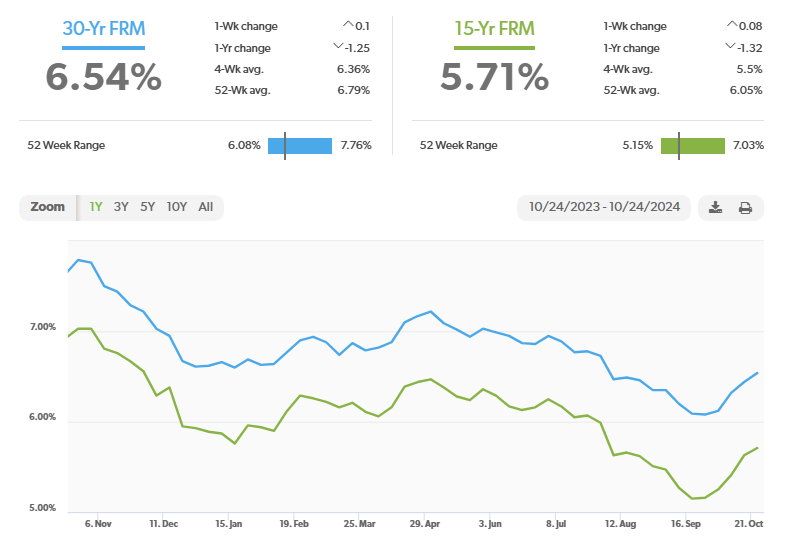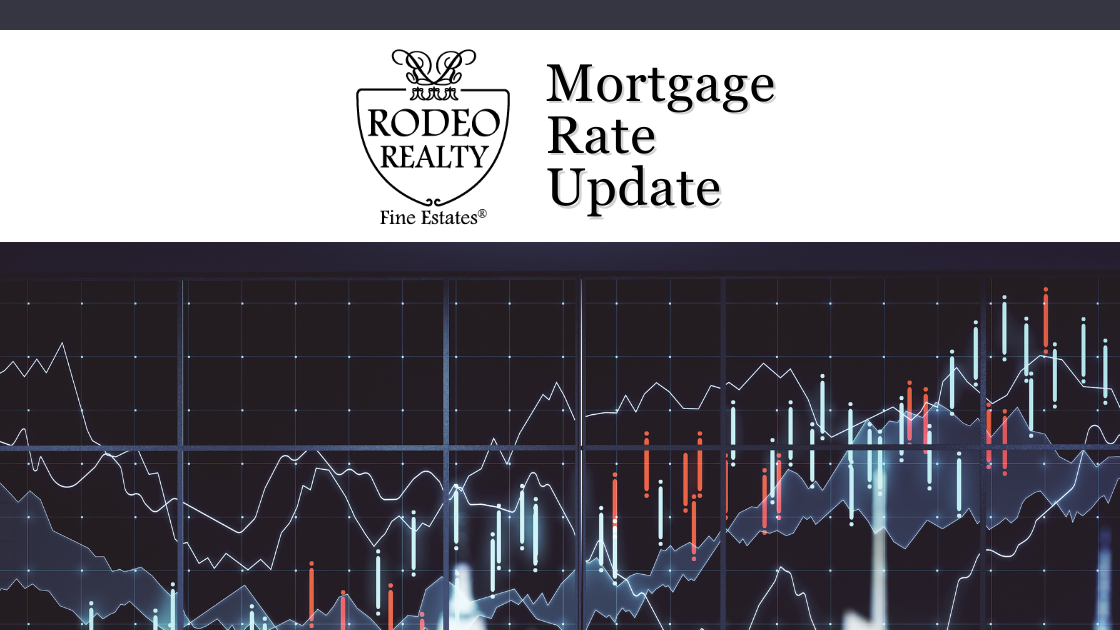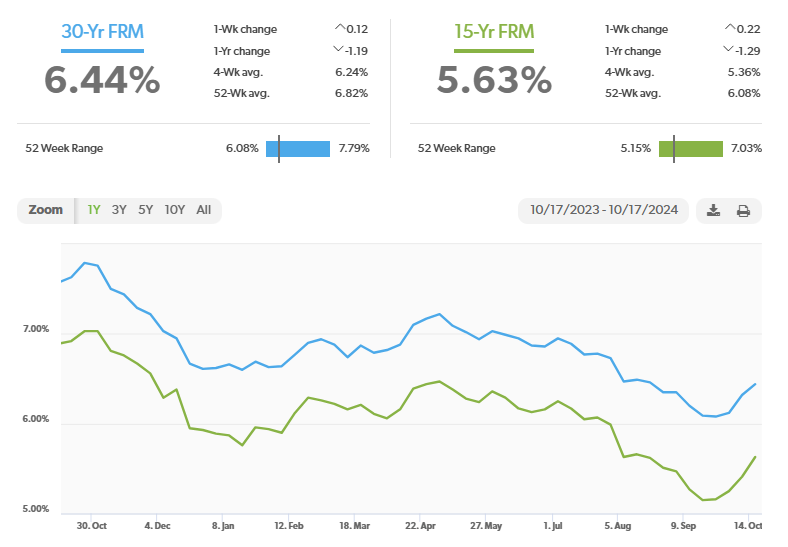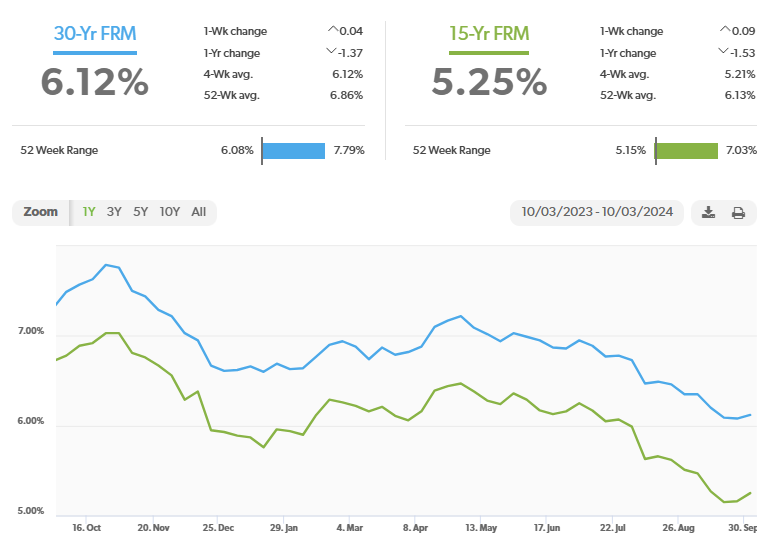| Investors pushed the Dow and S&P 500 to all-time highs again this week. That marked six straight weeks of gains. When the Fed began raising rates in 2022 it was widely expected that they would push the country into a recession to tame inflation. Now inflation is closer to acceptable levels and the Fed has begun to lower rates. Many indicators show that the economy has remained strong. Adding to the strong jobs report at the beginning of the month, new unemployment claims were down this week. The Commerce Department reported that retail sales rose 0.4% in September, exceeding expectations of a 0.3% monthly gain. Excluding auto sales, retail sales rose 0.5% in September. That far exceeded the 0.1% gain experts forecasted for a monthly increase in retail sales excluding autos. Third quarter profits are beginning to be reported. Early indications are that we will see another strong quarter.
Stock markets – The Dow and the S&P 500 closed the week at record highs, while the Nasdaq closed just off its record high set in July as investors reacted to positive inflation data. The Dow Jones Industrial Average closed the week at 43,275.91, up 1% from 42,863.86 last week. It is up 14.8% year-to-date. The S&P 500 closed the week at 5,864.67, up 0.8% from 5,815.03 last week. The S&P is up 23% year-to-date. The Nasdaq closed the week at 18,489.55, up 0.8% from 18,342.94 last week. It is up 23.2% year-to-date.
U.S. Treasury bond yields jumped on Friday after the September jobs report was released – The 10-year treasury bond closed the week yielding 4.08%, unchanged from 4.08% last week. The 30-year treasury bond yield ended the week at 4.38%, unchanged from 4.39% last week. We watch bond yields because mortgage rates follow bond yields.
Mortgage rates – Every Thursday Freddie Mac publishes interest rates based on a survey of mortgage lenders throughout the week. The Freddie Mac Primary Mortgage Survey reported that mortgage rates for the most popular loan products as of October 17, 2024, were as follows: The 30-year fixed mortgage rate was 6.44%, up from 6.32% last week. The 15-year fixed was 5.63%, up from 5.41% last week.
The graph below shows the trajectory of mortgage rates over the past year.

Freddie Mac was chartered by Congress in 1970 to keep money flowing to mortgage lenders in support of homeownership and rental housing. Their mandate is to provide liquidity, stability, and affordability to the U.S.
Home sales data is released on the third week of the month for the previous month by the National Association of Realtors and the California Association of Realtors. These are September’s home sales figures from the California Association of Realtors. The National Association of Realtors will release their September home sales report next week.
September California existing-home sales report – The California Association of Realtors reported that existing-home sales totaled 253,010 on an annualized rate in September, down 3.4% from 262,050 homes on an annualized rate in August, yet up 5.1% from a revised 240,840 homes sold on an annualized basis last September. The statewide median price paid for a home in September was $868,150, down 2.3% from $888,740 in August, and up 2.9% from $843,500 one year ago. There was a 3.6-month supply of homes for sale in September, up from a 3.2-month supply in August, and up from a 2.8-month supply in September 2023.
The graph below lists home sales data by county in Southern California.

Have a great weekend!
|


























